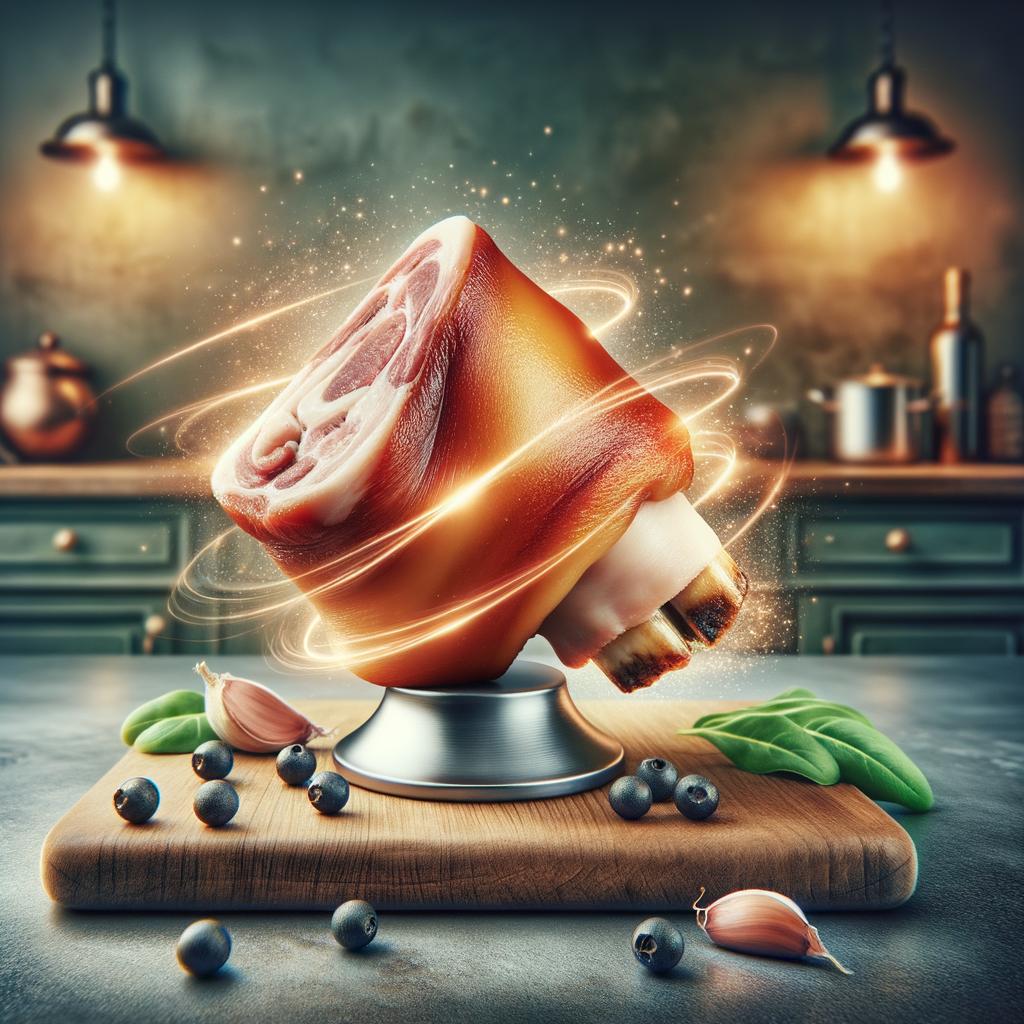Pork Knuckle

Description
The pork knuckle, also known as the pig's hock or ham hock, is a hearty and robust cut of meat that is located at the joint between the pig's tibia/fibula and its foot. It is characterized by its thick, tough skin, and a generous amount of collagen-rich connective tissue. When cooked properly, the pork knuckle transforms into a tender, succulent, and flavorful delicacy. The meat itself is relatively lean, but the surrounding fat and skin impart a rich, savory depth that is unparalleled. Its unique characteristics lie in the beautiful balance between the meat, fat, and connective tissues which, when cooked slowly, lend a gelatinous texture and an intense flavor that is hard to resist.
Primary Uses
Pork knuckle is a versatile ingredient used in a variety of cuisines worldwide. In Germany, it's the star of the classic dish known as Schweinshaxe, where it is roasted to perfection and served with sauerkraut and potatoes. In the Southern United States, it's often used to flavor dishes like collard greens, black-eyed peas, and beans. In Chinese cuisine, it's stewed with soy sauce, star anise, and other spices to create a rich, aromatic broth. Beyond its culinary uses, pork knuckle also holds cultural significance in certain regions, such as in Bavaria, where it is a traditional Oktoberfest dish.
History
The use of pork knuckle dates back to ancient times, when nothing on the animal was wasted. It's believed to have gained popularity during the Middle Ages in Europe, particularly in Germany, due to its affordability and the large amount of meat it provided. Over time, it has become a symbol of hearty, rustic cooking in many cultures. There are stories of it being used as a fortifying meal for laborers and farmers, its rich, collagen-filled broth providing much-needed sustenance after a hard day's work.
Nutritional Information
Pork knuckle is a good source of protein, providing essential amino acids necessary for muscle growth and repair. It's also rich in collagen, which is beneficial for skin health and joint mobility. The skin and connective tissues provide a substantial amount of gelatin when cooked, which is known to support digestive health. However, due to its high fat content, it should be consumed in moderation. When compared to other cuts of pork, the knuckle might be a bit higher in fat, but it's this fat that gives it its unique flavor and succulence.
The story of the pork knuckle is a testament to the resourcefulness and creativity of cooks throughout history, turning a tough, inexpensive cut of meat into a delicious and satisfying dish.

